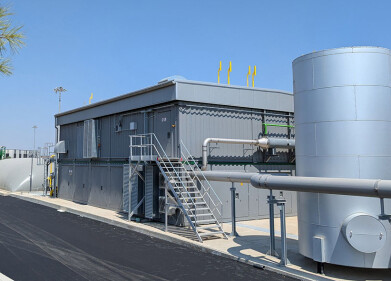Air clean up
How Do Temperature Inversions Trap Pollution?
Mar 15 2016
As a general rule, the higher you climb in altitude, the cooler the temperature becomes. This is because the sun’s rays heat the surface of Earth, leading to elevated temperatures at lower levels. As the hot air rises, it quickly becomes cool.
However, on occasion, you can find that warmer pockets of air exist above cooler ones. This phenomenon is known as temperature inversion, and can not only provide an unexpected and pleasant surprise for hillwalkers who find themselves stripping off layers as they ascend to the summit, but can also hold grave implications for the quality of the air involved.
How Do Temperature Inversions Occur?
Most commonly, temperature inversions happen later in the year towards autumn and winter, when the days are beginning to shorten. After sunset, the temperature of the ground quickly drops, which has a knock-on effect on the air immediately above it. However, since air does not conduct heat efficiently, there can often exist a layer of warmer air which retains its higher temperatures for longer.
This phenomenon is helped by clear skies and calm winds, since an absence of breeze means that the warmer air is not forcibly commingled with the cooler gases below. The longer nights of autumn and winter also allow for the ground to cool down for longer as well, meaning that stronger inversions happen in the colder months of the year.
Furthermore, surrounding geographical features, such as the hills which surround a valley, can also enhance the effects of temperature inversion. That’s why some hillwalkers may find themselves experiencing the bizarre phenomenon of rising temperatures as they climb higher in altitude.
How Do Temperature Inversions Affect Air Quality?
The layer of warm air acts as a sort of lid, trapping moisture and mist that has built up throughout the day. However, it’s not only harmless gases which become trapped beneath this lid – contaminants released by car exhausts or smoke from wood-burning stoves and fireplaces also have no place to go. This leads to elevated levels of poor air quality at ground level.
Air pollution is therefore exacerbated by strongly inverted temperatures, occurring most commonly as the year wears on and the days grow shorter and the nights longer. For hillwalkers, this shouldn’t represent a serious concern, since air quality is rarely at dangerous levels in the countryside.
However, in towns and cities it can prove to be a serious risk to the health of the community. London, for example, has notoriously poor air quality and has failed to reach the legal limits imposed by the European Union (EU) for the last five years. Indeed, the most recent estimates claimed that the UK capital would not reach its targets for at least another decade.
When air quality is this poor year-round, its further deterioration in winter can prove deadly, especially for the very young, very old or those with previously existing respiratory conditions. The Air Quality and Emissions (AQE) show took place in Telford in April of last year and aimed to discover new ways to curb pollution and improve air quality across the nation. However, unless those in power in the nation’s capital implement serious measures to curtail contamination, air quality will continue to suffer – even more so in the winter.
Events
Jun 17 2025 Guangzhou, China
Singapore International Water Week Spotlight 2025
Jun 23 2025 Singapore
Jun 25 2025 Sao Paulo, Brasil
Jul 02 2025 Bangkok, Thailand
Jul 02 2025 Bangkok, Thailand














